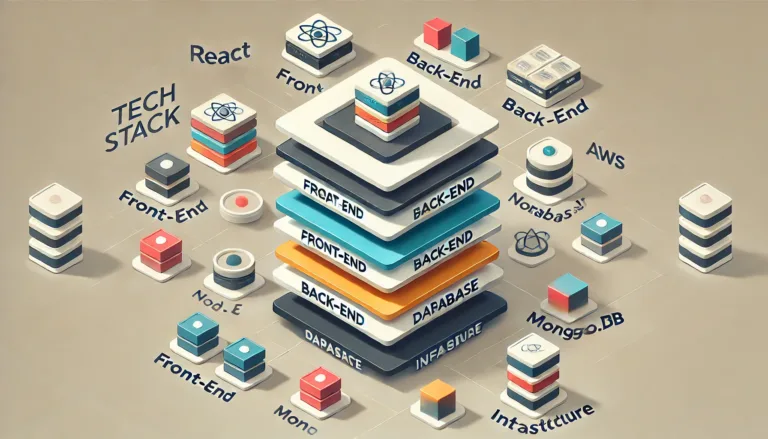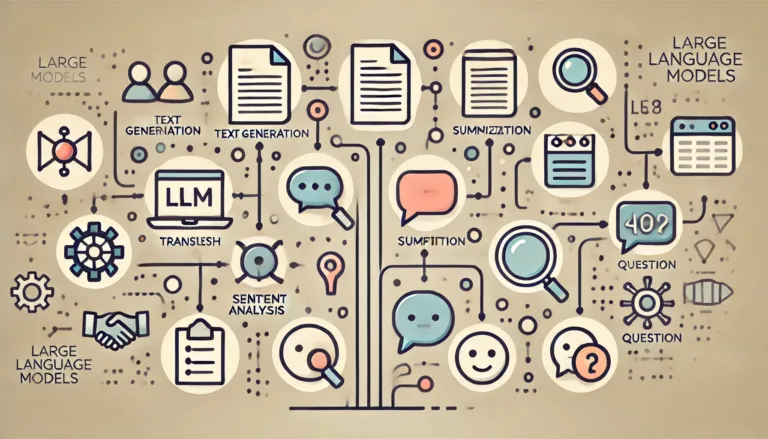Introduction
Language is at the heart of human interaction, and with the rise of AI, we’re now teaching machines to understand, interpret, and even generate language like never before. Natural Language Processing (NLP) is the branch of AI that bridges the gap between human communication and computer understanding. Whether you’re fascinated by the idea of creating chatbots, analyzing sentiment in text, or even generating creative writing, NLP offers a playground full of possibilities. In this article, we’ll explore 32 innovative NLP project ideas that can help you delve into this captivating field.
NLP is more than just a technological advancement; it’s a gateway to understanding the complexities of language. As businesses and researchers increasingly leverage NLP to gain insights from large text datasets, the importance of mastering this field becomes evident. From enhancing customer service through intelligent chatbots to combating misinformation with fake news detection, the applications of NLP are vast and varied. Let’s dive into these project ideas, each of which offers a unique way to explore the intricacies of language and its intersection with technology.
Beginner-Level Projects
1. Sentiment Analysis
Sentiment analysis involves developing a model that can analyze customer reviews, social media posts, or any other form of text and determine the sentiment behind it—whether it’s positive, negative, or neutral. This is a crucial tool for businesses looking to understand customer opinions and improve their products or services. For example, by analyzing thousands of customer reviews, a company can identify common complaints or praise points and adjust its strategies accordingly.
2. Chatbot Development
Creating a chatbot is one of the most popular applications of NLP. You can develop a chatbot for a specific industry, such as e-commerce, healthcare, or customer service, that can handle customer inquiries, provide recommendations, or even perform tasks like booking appointments. With advancements in deep learning, chatbots are becoming more sophisticated, capable of understanding and responding to a wide range of human emotions and queries.
3. Text Summarization
In an age where information overload is a common problem, creating a tool that summarizes lengthy articles or reports can be incredibly useful. Whether it’s summarizing news articles, research papers, or lengthy emails, text summarization tools help users quickly grasp the essential points without having to wade through the entire text.
4. Grammar and Spell Checking
Developing an AI-powered grammar and spell checker involves creating a model that can identify and correct grammatical errors in text. Tools like Grammarly have set the standard, but there’s always room for new approaches that can offer more nuanced suggestions or better integration into various writing platforms.
5. Text Classification
Text classification involves categorizing text into different topics or genres. For instance, you can develop a model that classifies news articles into categories like politics, sports, or technology. This is particularly useful for organizing large datasets or automating content moderation.
6. Opinion Mining
Opinion mining, or aspect-based sentiment analysis, involves extracting opinions from text, such as product reviews or political speeches, and determining the sentiment toward specific aspects. For example, in product reviews, you might analyze customer opinions on various features like battery life, design, or usability.
7. Text-to-Speech
Converting written text into spoken words using AI is another significant application of NLP. Text-to-speech technology is used in various applications, from reading out messages to assisting visually impaired users. This project could involve improving the naturalness and expressiveness of AI-generated speech.
8. Document Clustering
Grouping similar documents together using NLP techniques can be useful in various contexts, from organizing research papers to categorizing news articles. This project involves developing algorithms that can identify and cluster documents based on their content.
9. Text Analytics for Research
Analyzing and summarizing research papers is a time-consuming task that can be made more efficient with NLP. This project could involve developing tools that help researchers quickly identify key points, trends, and insights from a large body of research.
Intermediate-Level Projects
1. Language Translation
Building a model that translates text from one language to another in real-time is a challenging yet rewarding project. Language translation models like Google Translate have revolutionized global communication, but there’s always room for improvement, especially when it comes to understanding context, idioms, and cultural nuances. This project can also be extended to develop translation tools for lesser-known languages, promoting inclusivity in digital communication.
2. Speech Recognition
Designing a system that converts spoken language into text has numerous applications, from transcribing meetings to enabling voice-activated devices. Speech recognition technology is the backbone of virtual assistants like Siri and Alexa. Improving accuracy in noisy environments or understanding different accents are potential challenges you could tackle in this project.
3. Named Entity Recognition (NER)
Named Entity Recognition (NER) is the process of identifying and classifying entities in text, such as names, dates, locations, and organizations. NER is particularly useful in information extraction tasks, where you need to pull out specific data from a large corpus of text. For instance, in legal documents, NER can help identify key entities that are relevant to a case.
4. Automatic Text Generation
Using AI to generate creative writing, such as stories, poetry, or even news articles, is a fascinating area of NLP. Text generation models, like those based on GPT (Generative Pre-trained Transformer) architecture, can produce human-like text, offering endless possibilities for creative and practical applications.
5. Sentiment Analysis for Social Media
Expanding on traditional sentiment analysis, this project focuses on analyzing sentiment trends on social media platforms like Twitter. Given the real-time nature of social media, sentiment analysis in this context can provide insights into public opinion, brand perception, and even predict market trends.
6. Voice-Controlled Assistants
Voice-controlled personal assistants, like Google Assistant or Amazon Alexa, rely heavily on NLP to understand and execute user commands. Developing your own voice-controlled assistant involves integrating speech recognition, natural language understanding, and task automation to create a seamless user experience.
7. Sarcasm Detection
Sarcasm is notoriously difficult for machines to detect, given its reliance on context and tone. Creating a model that identifies sarcasm in social media posts or reviews is a challenging but rewarding project, with applications in sentiment analysis and content moderation.
8. Fake News Detection
In an era where misinformation spreads rapidly, building a system to detect fake news articles is a critical application of NLP. This project involves developing a model that can analyze text for signs of misinformation, such as sensational language or unverified claims, and flagging it for further review.
9. Language Modeling
Language modeling involves developing a predictive model that can suggest the next word in a sentence, similar to the autocomplete feature in search engines or messaging apps. This project can be a stepping stone to more complex NLP tasks, as it requires a deep understanding of syntax, semantics, and context.
10. Automated Email Responses
Designing a system that suggests email replies based on received messages can significantly enhance productivity, particularly in customer service or sales. This project could involve developing a model that understands the context of an email and generates appropriate, context-sensitive responses.
11. AI for Content Moderation
Automatically detecting and filtering inappropriate content in online forums, social media, or comments sections is an essential task for maintaining a safe online environment. This project involves developing models that can detect offensive language, hate speech, or other forms of harmful content.
12. Emotion Detection in Text
Emotion detection involves analyzing and classifying the emotions conveyed in written communication. This project can be applied to customer service, where understanding the customer’s emotional state can lead to better responses, or in social media analysis to gauge public sentiment.
13. Question Answering Systems
Developing a system that answers questions based on a given text is a practical application of NLP that combines elements of information retrieval and natural language understanding. Such systems are widely used in customer service and educational tools.
14. Speech-to-Text for Accessibility
Converting speech to text for people with hearing impairments is a noble application of NLP. This project can help make digital content more accessible, allowing people with hearing impairments to engage with audio content in a textual format.
Advanced-Level Projects
1. Text-Based Games
Creating an interactive text-based game using NLP is a fun and creative way to apply your skills. These games often involve players inputting text commands, which the game interprets to progress the story. Incorporating elements like natural language understanding and text generation can make the game more engaging and immersive.
2. Multilingual Chatbots
Building a chatbot that can converse in multiple languages is a challenging project that combines language translation, natural language understanding, and dialogue management. Multilingual chatbots are particularly useful in global businesses that need to interact with customers from different linguistic backgrounds.
3. Topic Modeling
Automatically identifying topics within a large collection of documents is another powerful application of NLP. Topic modeling can help in organizing and summarizing large datasets, making it easier to identify trends and patterns in data.
4. Language-Based AI Tutors
Creating an AI that helps students learn a new language is a rewarding educational application of NLP. This project could involve developing interactive exercises, quizzes, and feedback mechanisms that adapt to the learner’s progress.
5. AI-Powered Transcription Services
Developing a tool that transcribes audio files into text can be invaluable for journalists, researchers, and anyone who deals with recorded content. The challenge lies in accurately transcribing different accents, dialects, and languages.
6. Custom Named Entity Recognition
Creating Named Entity Recognition (NER) models tailored for specific industries, like healthcare or law, can significantly improve the accuracy and relevance of information extraction tasks. This project could involve training models on specialized datasets to recognize industry-specific terminology and entities.
7. AI-Powered Resume Parser
Building a tool that extracts key information from resumes can streamline the recruitment process for employers. This project involves developing a model that can identify and categorize information like work experience, education, and skills from various resume formats.
8. AI Writing Assistants
Developing a tool that suggests style improvements in writing is a practical application of NLP, especially for content creators, journalists, and students. This project could involve creating algorithms that analyze writing style, tone, and structure, offering suggestions to enhance readability and engagement.
9. Semantic Search Engines
Enhancing search engines to understand the meaning behind search queries rather than just matching keywords is a powerful application of NLP. Semantic search engines can deliver more relevant results by understanding the intent and context behind user queries, making the search experience more intuitive and effective.
Conclusion
Exploring NLP opens up a world where machines can engage in conversations, understand human emotions, and even create content. The potential applications are endless, making NLP one of the most exciting areas of AI today. As you consider these projects, think about how language shapes our world and how AI can enhance that experience.
As we’ve seen how AI can process language, let’s now turn our attention to Computer Vision, where AI is giving machines the ability to interpret and understand visual data. After that, we’ll look into how AI is revolutionizing Healthcare, making it smarter and more personalized.









